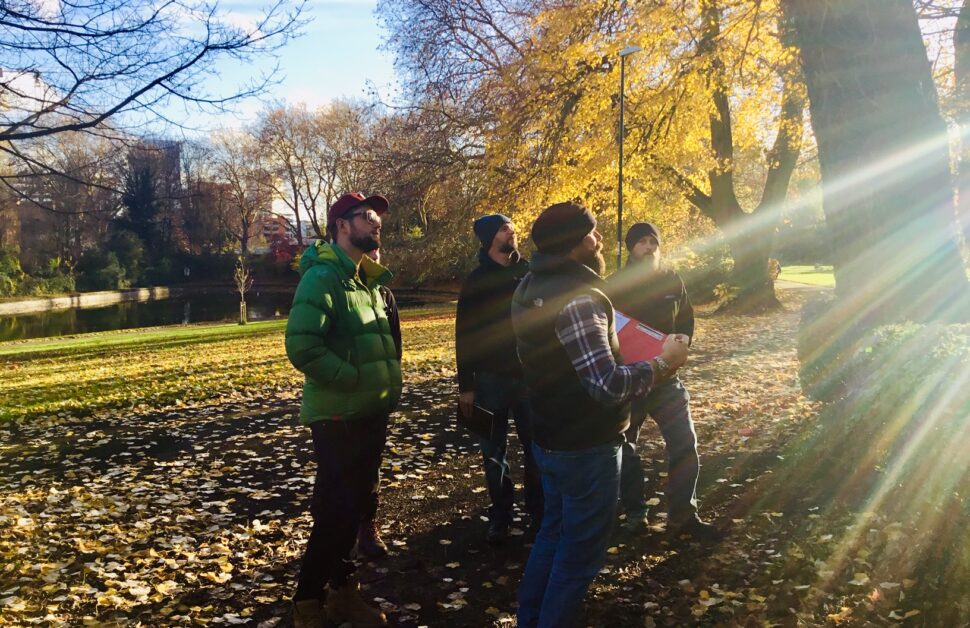
When it became apparent that the growing team at Arbtech Consulting Ltd. (Artbtech) needed a more structured, replicable and defensible system for assessing the risk that trees represent for our clients, the senior team agreed unanimously that we would move away from the ‘loosely based on VTA’ approach that we had organically adopted and use the Tree Hazard: Risk Evaluation and Treatment System (THREATS).
Julian Forbes-Laird (JFL) started work on THREATS in 1998 when engaged as a highways tree surveyor. Peer review (2002) and user feedback have been responsible for iterative amendments. However, the algorithm has remained unchanged for over 18 years. The system considers the three components of tree risk: defect; target and impact as detailed by Matheny and Clark (1994). An algorithm provides a ‘relatively subtle interaction between these three components’. Importantly for our team, the conclusion generated is relatable to the ‘unassisted arboricultural decision making’ (gut instinct) that experienced tree surveyors inevitably apply.
Like many (honest) arborists I have been guilty of letting the tree get in the way of my tree risk assessment. It’s all too easy to let your rational mind be swayed by the emotional response you have when looking closely at often magnificent organisms. As with most businesses we have a range of experience within the ranks. At one end of that spectrum, we have long time Vets. with 20 years’ experience of ‘touching trees’. At the other we have ecologists, used to looking at trees from a different perspective who are interested in appreciating them in a more holistic context. How do we ensure that all of these people can apply a system in the field and arrive at a consensus with any other team member? Be trained by the developer of the system, that’s how!
From initial contact with JFL I found his service to be excellent. This was my first time organising an event of this nature and the FLAC team did all of the leg work for me. A centrally located venue was recommended (and booked on our behalf) that met all the requirements of both seminar room and tree stock within the grounds. With his broad range of professional commitments, JFL is a busy man. However, he made himself personally available to deliver the one-day training seminar on a date that suited all concerned. All we needed to do was turn up at the right time on the right date with the requisite equipment and having done a little background reading.
As mentioned, our delegates were a mixed bunch. JFL specifically tailored the program for our needs. He even went as far as developing a paired back initial assessment system for those without the requisite experience and training to enable them to determine whether a detailed inspection might be needed by a suitably qualified colleague. This was an unexpected and impressive addition to the service.
The seminar started with the obligatory background information. This put risk assessment in general and tree assessment into context. A short ‘test’ followed to highlight any gaps in the delegates knowledge. This was self-marked and found to be an incredibly useful exercise by all involved. The remainder of the morning sessions detailed the benefits of the THREATS methodology over other more complicated and less reasonable systems.

The Arbtech team applying what they had learnt.
The afternoon session saw us out in the field applying the morning’s lessons. Straight off the bat, the team were reaching broad consensus with their risk assessment. There will always be a range of opinions in a group of arbs. But the methodology flattened these out and allowed them to only really be expressed in their recommendations. I’m happy with this. Our tree risk assessment has been standardised and there is always more than one method of risk management that might be suitable in any given situation.
I have seen JFL only once before on the arboricultural lecturing circuit and again found his delivery to be perfectly suited to the group. It was, indeed, inspiring to engage with one who approaches his profession with critical assessment of the status quo and who can candidly articulate his opinion with intelligent confidence. The whole team report to have taken a lot from the day. Even JFLs right-hand man who joined us for the day admitted that he too had benefited.
Arbtech are have benefited greatly from that one day of team improvement. We greatly look forward to any further dealings we have with JFL and his team, I cannot fault our experience.

There are no comments yet. Why not get involved?